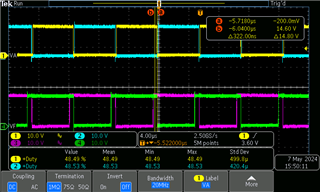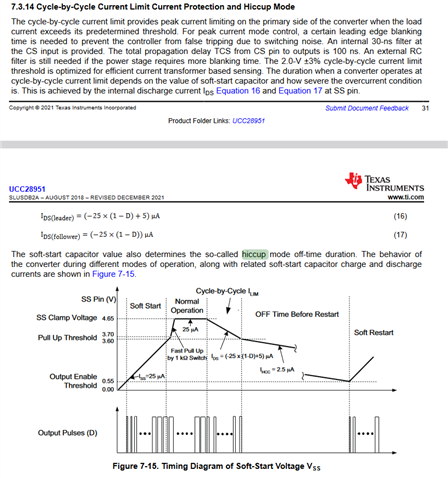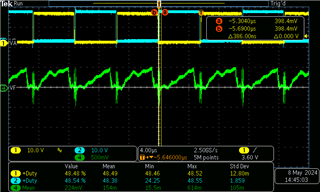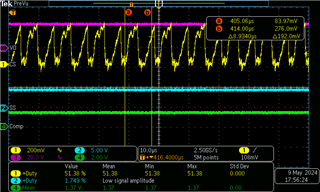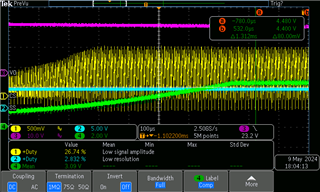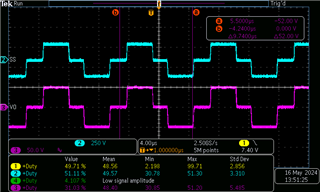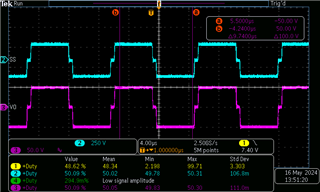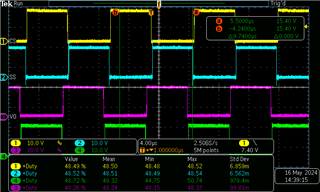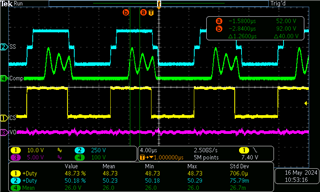Hi , we are currently bringing up a 400W PSFB, Vin=150V-800V, Vout=24V using the UCC28951 PSFB controller.
Currently we have tested at light load and input voltages not greater than 250V. Due to current configuration of the IC, synchronous rectifier will turn off below ~55W.
For the conditions we have currently tested, we have seen the converter is able to output 24V and maintain regulation up to 50W, however as we exit the DCM mode and the output drivers turn ON, the output voltages collapses to zero volts. I have checked the waveforms I.E. OutA, OutB, OutE, OutF, and they seem to be in correct sequence. So wondering if you have any suggestion as what can be causing this issue?


